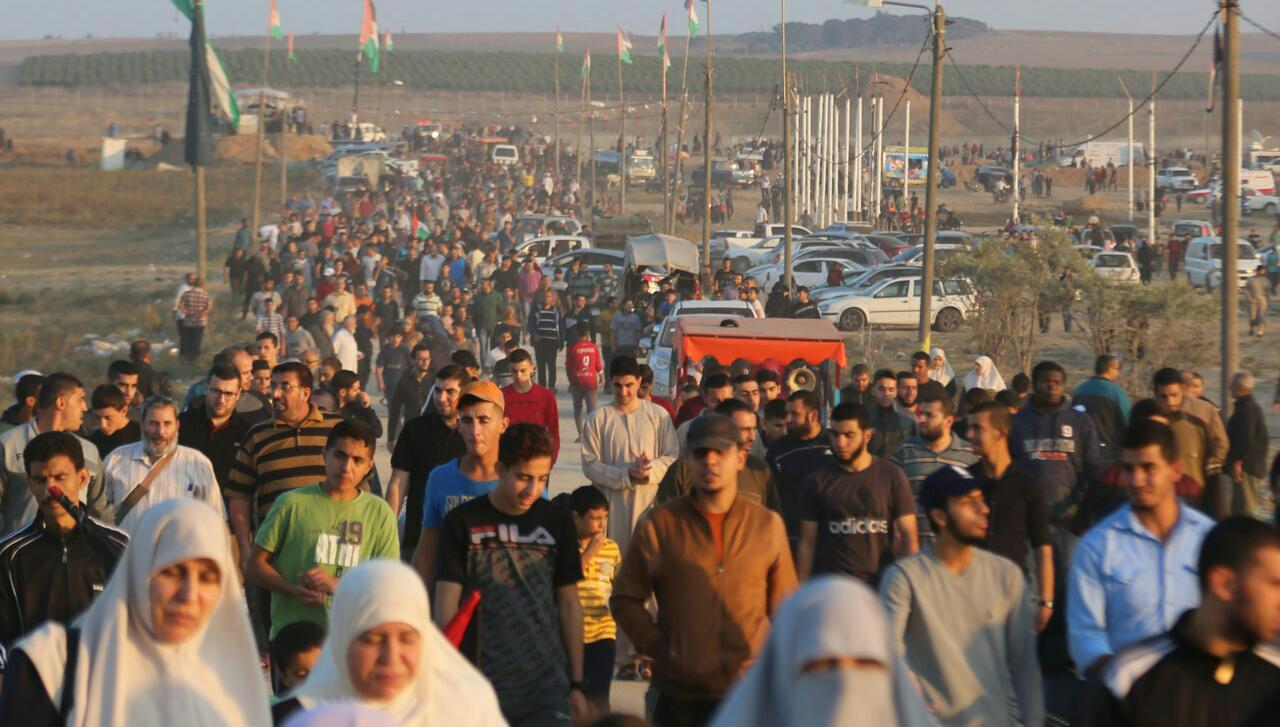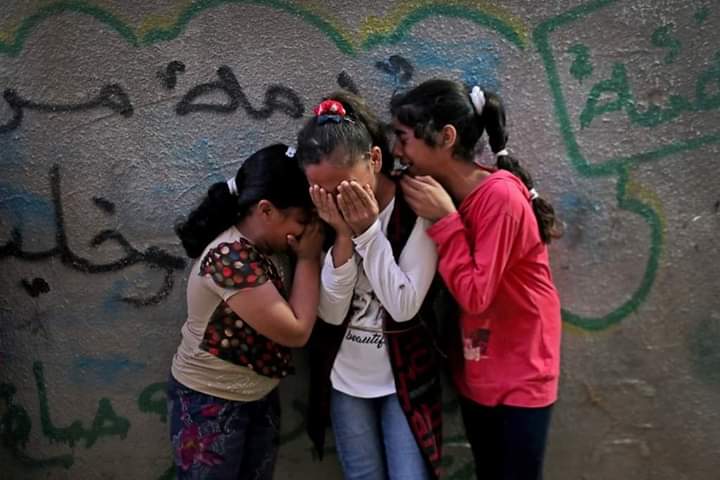Tag: Great return march
-
Mosques, churches, protests: Gaza on the Balfour Declaration’s 102nd anniversary
On the 102nd anniversary of the Balfour Declaration, churches rang bells and mosques called for prayer at the same time, while tens of thousands of Palestinians entered the buffer zone this Friday between the besieged Gaza Strip and Israel in the massive weekly Great March of Return protest.
-
Slain Gaza protester: father, husband, brother, and “a Palestinian who dreamed of liberation”
Gazan journalist speaks with Alaa Nizar Hamdan’s wife and family the day after he was shot and killed by Israeli forces in the Great March of Return in Gaza.
-
Israeli and international protesters demonstrated at Gaza fence in solidarity with The Great Return March
20th July 2018 | Close to the Gaza fence Israeli and international protesters demonstrated at Gaza fence in solidarity with The Great Return March On the 20th of July, Friday afternoon, a group of anti-zionist Israeli and international solidarity activists approached the Gaza siege fence at the same time that Gazans gathered by the fence on…



